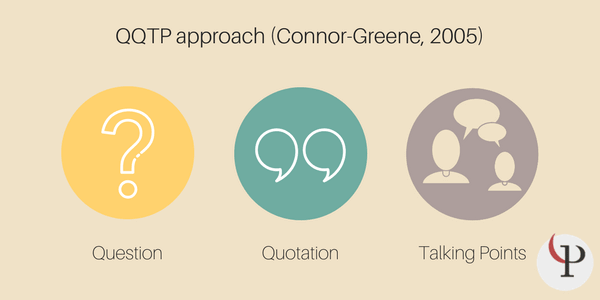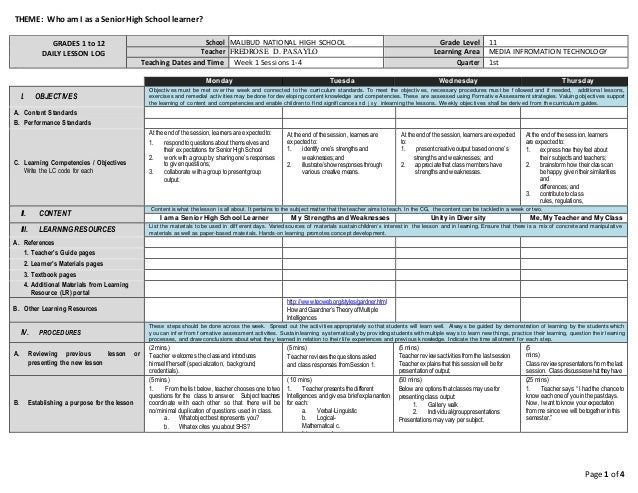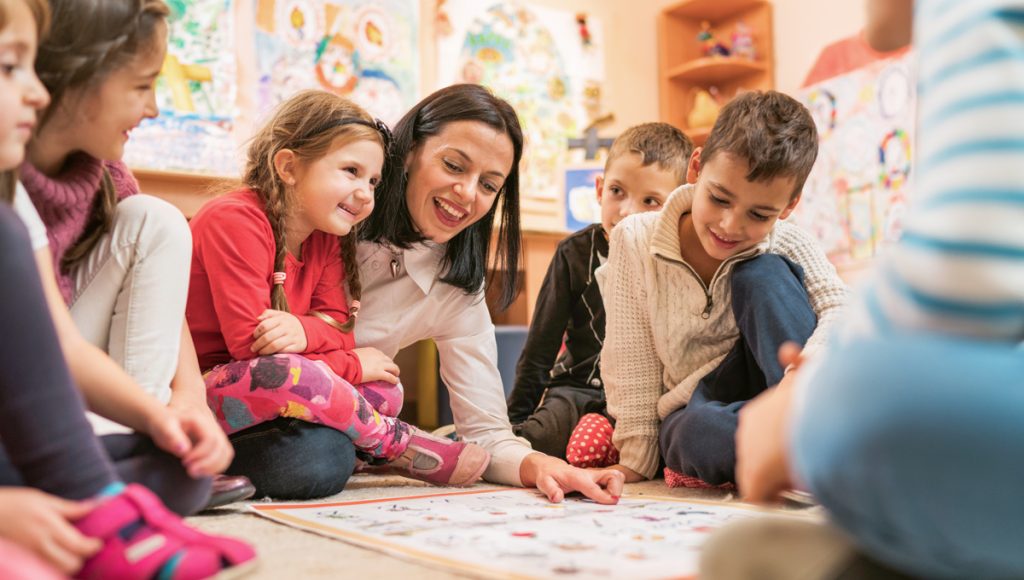Science communication is part of a scientist’s everyday life. Scientists must give talks, write papers and proposals, communicate with a variety of audiences, and educate others. Thus to be successful, regardless of field or career path, scientists must learn how to communicate. Moreover, scientists must learn how to communicate effectively. In other words, to be a successful scientist, you must be an effective communicator.
- Teach To Be Happyclass Communication Blog For Beginners
- Teach To Be Happyclass Communication Blog Examples
- Teach To Be Happyclass Communication Blog Using
It all boils down to this — communication is a skill and it takes focused effort to do it well. In other words, your team won’t communicate by accident. You need to teach them to do it on purpose and keep investing in those skills over time. Otherwise, you’ll waste a lot of time recovering from problems that could have been prevented. Academic blog that helps. THE IMPACT OF INFORMATION AND COMMUNICATION TECHNOLOGY IN TEACHING AND LEARNING. January 20, 2021 admin Uncategorized 0.

Before I go on, I should note that for the purpose of this post, I am defining science communication broadly, meaning any activity that involves one person transmitting science-related information to another, from peer-reviewed articles to tweets.
Effective communication means transmitting your message clearly and concisely so that it is understood. It’s about engaging your audience – it’s about the ‘So what?’ and ‘Why does it matter?’ of your message.
When scientists communicate more effectively, science thrives. Science is increasingly interdisciplinary and the ability to communicate more effectively across disciplines fosters collaboration and innovation. Being able to communicate the relevance and impact of their ideas and discoveries can enhance scientists’ ability to secure funding or find a job. It allows them to write better and more comprehensible research papers. It also allows them to be better teachers and mentors for next-generation scientists.
When scientists are able to communicate effectively beyond their peers to broader, non-scientist audiences, it builds support for science, promotes understanding of its wider relevance to society, and encourages more informed decision-making at all levels, from government to communities to individuals. It can also make science accessible to audiences that traditionally have been excluded from the process of science. It can help make science more diverse and inclusive.
A sense of Wonder is a Powerful Tool. Ancient History Lessons. This serie of lessons focus on the era of pre-history up to the fall of the Roman Empire. Macs historyhome.
Although having more scientists who are effective communicators benefits science and society greatly, there are still relatively few training opportunities for science students and professionals to develop these skills.
Fortunately, effective communication skills are no longer perceived as soft skills. Social implications of business ethics ethics of mcdonalds survey. Increasingly, they are becoming part of the core professional skills every science student and professional should have.
Teach To Be Happyclass Communication Blog For Beginners
Many science communication training programs and courses for scientists use the public communication of science as a tool to develop effective communication skills. See, for example, this list of training opportunities compiled by COMPASS, an organization dedicated to improving science communication. Here are a number of other resources:
Public communication of science is not for everyone, of course. We can’t expect all scientists to use Twitter, participate in their local school’s career day or blog, but a little bit of effort goes a long way.

Public communication encourages scientists to think about the big picture. For instance, scientists can get bogged down with the specifics of a research question or use too much jargon to explain a concept. Public communication encourages scientists to find simple, more succinct ways to get the essentials of their message across. Why does/should it matter to your audience? Why is it important?
Sure, no one can argue that writing a peer-reviewed research article is the same as writing a science blog for high school students, or that giving a talk to your peers at a scientific conference is the same as standing in front of a group of middle schoolers to teach them about chemistry. Although public communication may seem very different from scholarly communication of science, the principles and strategies that make messaging effective in each arena are very similar.
For example, know your audience. Who are they? You always need to know who you are trying to reach, as it affects everything else you do. Are you trying to reach peers in your field or are you communicating across fields? Are you talking to a potential funder or to a local reporter? Regardless of your message and your goal, you always need to know your audience.
“If you can’t explain it simply, you don’t understand it well enough,” Albert Einstein said. As experts, scientists have a deep knowledge of particular subjects. To communicate something effectively, one needs a similarly deep knowledge of the associated skills. Public communication offers scientists ways to learn and practice the basics of effective communication. By teaching scientists how to explain their work simply—and more effectively—public communication increases the impact of science in multiple dimensions.
As a teacher, the idea of creating a happy classroom is normally at the top of our agenda. Forget the staffroom camaraderie, the satisfaction of finishing a pile of marking and the joy of finding the missing glue lid, what teachers simply want is for children to be happy.
But how can you create a happy classroom? What can you put in place to ensure that the happiness of everyone, you included, is easily put into place? Well, thanks to our Happy-Centred School programme, we’ve got a few tricks up our sleeve to help you.
Why is Creating a Happy Classroom Necessary?
In August 2019, the annual Good Childhood Report from the Children’s Society found overall happiness among 10- to 15-year-olds had dipped below 8 on a scale of 1 to 10, with an average of 7.89. Nearly 5% of those surveyed reported happiness scores below 5 out of 10, which equates to approximately 219,000 children in the UK being unhappy with life as a whole. It also reported that there was a ‘significant dip’ in happiness with school in 2016/17.
So, as the report says, ‘As a society we have to start taking children’s well-being more seriously,’ and as educators, we’re in a prime position to do this.
At risk of sounding like the sixth Spice Girl, what we really, really want is for the children to come in every morning full of excitement, ready and eager to start the day ahead. We want them to leave at the end of the day with smiles on their faces, inspired by the lessons we’ve taught.
But it’s not always that easy. From family unemployment and poverty to young carer roles and neighbourhood issues, many other factors can stand in our way.
Creating a happy classroom, therefore, becomes crucial.
5 Ways to Create a Happy Classroom
A classroom should be a space where happiness takes precedence, where children are always met with a smile and with positivity. It’s a space where their wellbeing is as important as their academic achievements. So how can we create one?
1. Providing Support
Creating a support network can help to build happiness in the classroom. From friends, family and the adults within the school, children soon realise that they have important people to turn to when they need them. Feeling lonely and with nowhere to turn can do much to damage a child’s mental health and wellbeing. By creating a classroom with a clear support system in place, children’s overall happiness and confidence can increase.
It’s not easy for all children to understand how to support others within the classroom either – it’s a skill that needs to be explicitly taught to some. Working together to establish what that support looks like within your classroom can help those who struggle with this aspect of personal relationships and confirm your expectations to the rest.
2. Celebrating Achievement and Success
Celebrating individual and group achievements can do much to enhance the happiness in your classroom. Studies have shown that reward and recognition can go a long way to boosting people’s confidence and morale. When we achieve our goals, our brain sends messages to our body to say, ‘Well done you!’ We release neurotransmitters such as serotonin (the happy chemical) and dopamine (the motivation and reward chemical), which help us to feel great.
In both children and adults, the levels of dopamine and serotonin that we have in our bodies play a part in our overall wellbeing, digestion and sleep. The more serotonin and dopamine, the happier we tend to be. Celebrating mistakes can help here too. Creating a happy classroom starts with an understanding of the importance of growth mindset and of learning from our mistakes.
As much as stickers and smiley faces can work wonders with happiness, an enjoyment of intrinsic happiness is important too. Build in time for children to reflect on things they are proud of and why.
3. Teaching Self-Confidence
Confidence can increase happiness, but it’s not something we’re all naturally born with. For many of us, it is a learned skill that improves with age, experience and practise. A happy classroom embraces this journey and provides opportunities for children to learn this skill in their own time, with the support of those around them.
For children to be successful, they need to be able to manage and overcome their fears, worries, limiting beliefs and problems. They also need to look at how other people portray confidence, even though they may not naturally be confident at all – this can be quite the revelation for some children!
Give children a wide range of vocabulary to indicate confidence. Talk about inner belief, optimism, courage and determination, so that children understand what these traits are and the importance of them. Make it part of your everyday classroom discussions and model what it’s like to struggle with something, persevering until you get the hang of it. Share any relevant experiences from outside of school or your own childhood that can show them what happens when you have the confidence to continue.
Gentle encouragement and recognition of their efforts can be all most children need to slowly build their confidence. Slow and steady wins the race every time.
4. Building Positive Relationships
Having positive relationships with peers and adults within the school can do much when creating a happy classroom. Sadly, not all children have such positive relationships outside of school, so providing a consistently happy, positive environment within it can contribute heavily to their overall happiness.

Teaching and modelling what positive relationships look like will help children as they learn how to build their own. Some may not have the confidence or the understanding and will, therefore, learn a lot from how you build positive relationships with each pupil and with other adults in the classroom/school.
As the children begin to build these positive relationships, it will not only improve their overall happiness, but it will give them a sense of belonging and feeling valued. It will help to develop their self-confidence and give a sense of security and comfort. Most importantly it will teach them how to communicate openly, trying out new ideas without fear of judgement. All of these skills will stand them in good stead as they make new positive relationships later in life.
It will also help them identify when a relationship is not a positive influence and how this can impact their wellbeing.
5. Developing Coping Skills
Life isn’t fair. Decisions and situations rise up and are out of our immediate control. Children (and adults) can find this one of life’s toughest lessons. What is in our control, however, is how we cope and react when times get tough. In order to feel happy, we need to feel in control.
If children develop core strategies early on, they can apply them throughout their life and adapt them to suit any situation. If we’re able to teach children to understand their emotions, as well as how their body may feel and react during times of stress, they will be able to identify what they need to do to feel better.
It’s not a case of simply shying away from a challenge when it presents itself either; it’s about developing coping behaviours that can help children to manage their emotions successfully. Children with a bank of coping strategies up their sleeves can do much for creating a happy classroom and for children’s overall mental health and wellbeing.
Teach To Be Happyclass Communication Blog Examples
A Positive and Happy Influence
Creating a happy classroom isn’t just about smiling every day. It’s about developing an environment that looks after the whole child and helps them build strategies to feel happier about all aspects of their lives. All the themes listed above are interwoven and all are equally important in helping you achieve this.
Teach To Be Happyclass Communication Blog Using
As teachers we are in the privileged position to be a constant, positive influence in the lives of our pupils and this is a position we should feel proud of. Creating a happy classroom is just the beginning.

